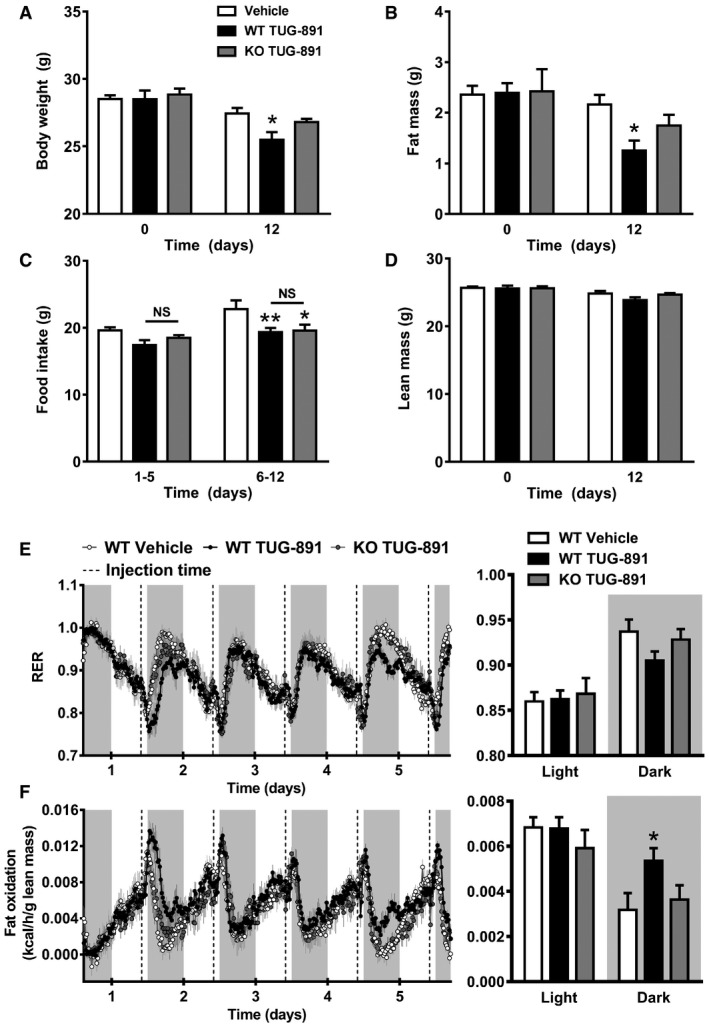-
A–D
GPR120 KO mice and WT littermates (n = 6–8) were treated with the GPR120 agonist TUG‐891 (35 mg/kg) or vehicle for 12 days. At the beginning (day 0) and end (day 12) of this treatment period, body weight, fat mass, and lean mass were measured. Food intake was determined after 5 and 12 days of treatment.
-
E–F
GPR120 KO mice and WT littermates (n = 6–8) were treated with the GPR120 agonist TUG‐891 (35 mg/kg) or vehicle. Respiratory exchange ratio (RER) and fat oxidation were determined by housing the mice in metabolic cages. Injection of TUG‐891 or vehicle is indicated by dotted lines, and light and gray areas represent the light and dark phase, respectively. For bar graph analysis, mean results in the light and dark phase were calculated.
Data information: Data represent means ± SEM. *
P <
0.05, **
P <
0.01 compared to the vehicle group, according to two‐way ANOVA with Tukey's
post hoc test. The exact
P‐value for each significant difference can be found in
Appendix Table S5.

